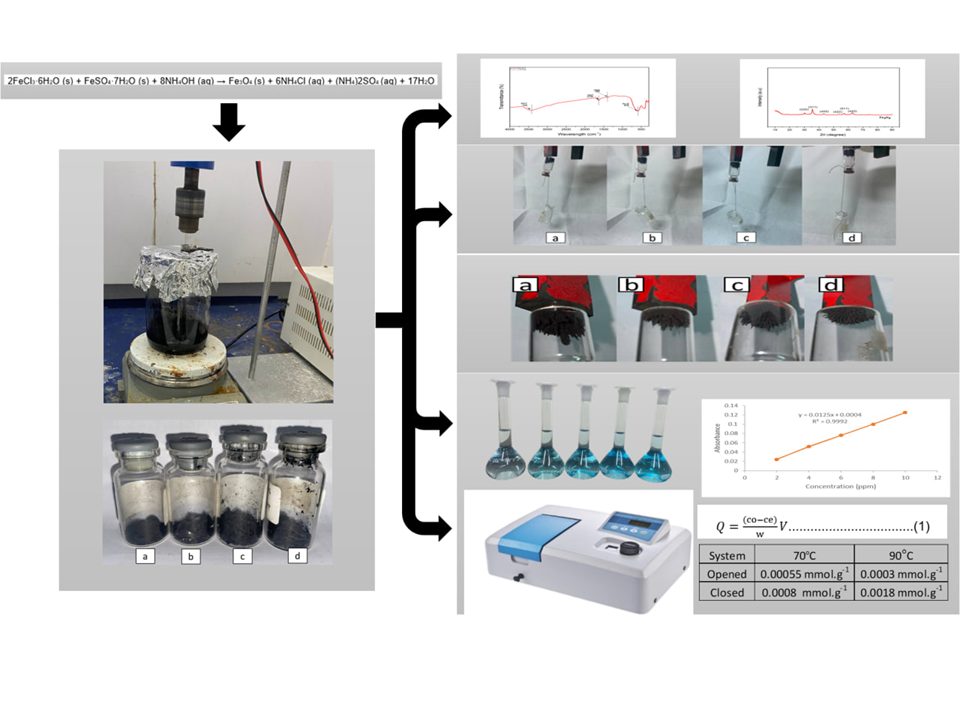Effect of Different Temperatures in Magnetite Synthesis on Methylene Blue Adsorption
Keywords:
Ammonia, Close system, Coprecipitation, Magnetite, Methylene blue, Open systemAbstract
This study aims to synthesize magnetite (Fe₃O₄) particles using the coprecipitation method, with variations in temperature (70°C and 90°C) and reaction system (open and closed) to evaluate their effects on product quality. Characterization was conducted using FTIR, XRD, and organoleptic observation to confirm the formation of Fe₃O₄. Additional tests included magnetic attraction measurements through mass response and adsorption capacity (Q) analysis using methylene blue. FTIR analysis showed absorption bands at 3417.00 cm⁻¹, 1627 cm⁻¹, 1404 cm⁻¹, and 578 cm⁻¹, indicating the presence of O–H, C=O, and Fe–O functional groups. XRD patterns revealed diffraction peaks at 2θ values of 30.27°, 35.23°, 43.22°, 53.71°, 57.43°, and 62.11°, confirming the spinel crystal structure of Fe₃O₄. The sample synthesized at 90°C under closed conditions exhibited a darker black color and higher mass yield, suggesting improved crystallinity and phase purity. The closed system also showed higher adsorption capacities of 0.0008 mmol·g⁻¹ at 70°C and 0.0018 mmol·g⁻¹ at 90°C, along with stronger magnetic response. The open system produced a black precipitate with lower yield and weaker magnetic response, suggesting oxidation of Fe²⁺ to Fe³⁺ due to direct contact with oxygen, leading to the formation of compounds such as hematite or maghemite with lower magnetic properties. These results confirm that higher reaction temperatures and closed conditions optimally enhance the quality and stability of magnetite.

Downloads
Published
Issue
Section
License
Copyright (c) 2025 Sorption Studies

This work is licensed under a Creative Commons Attribution-ShareAlike 4.0 International License.








